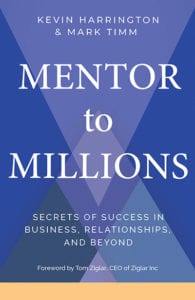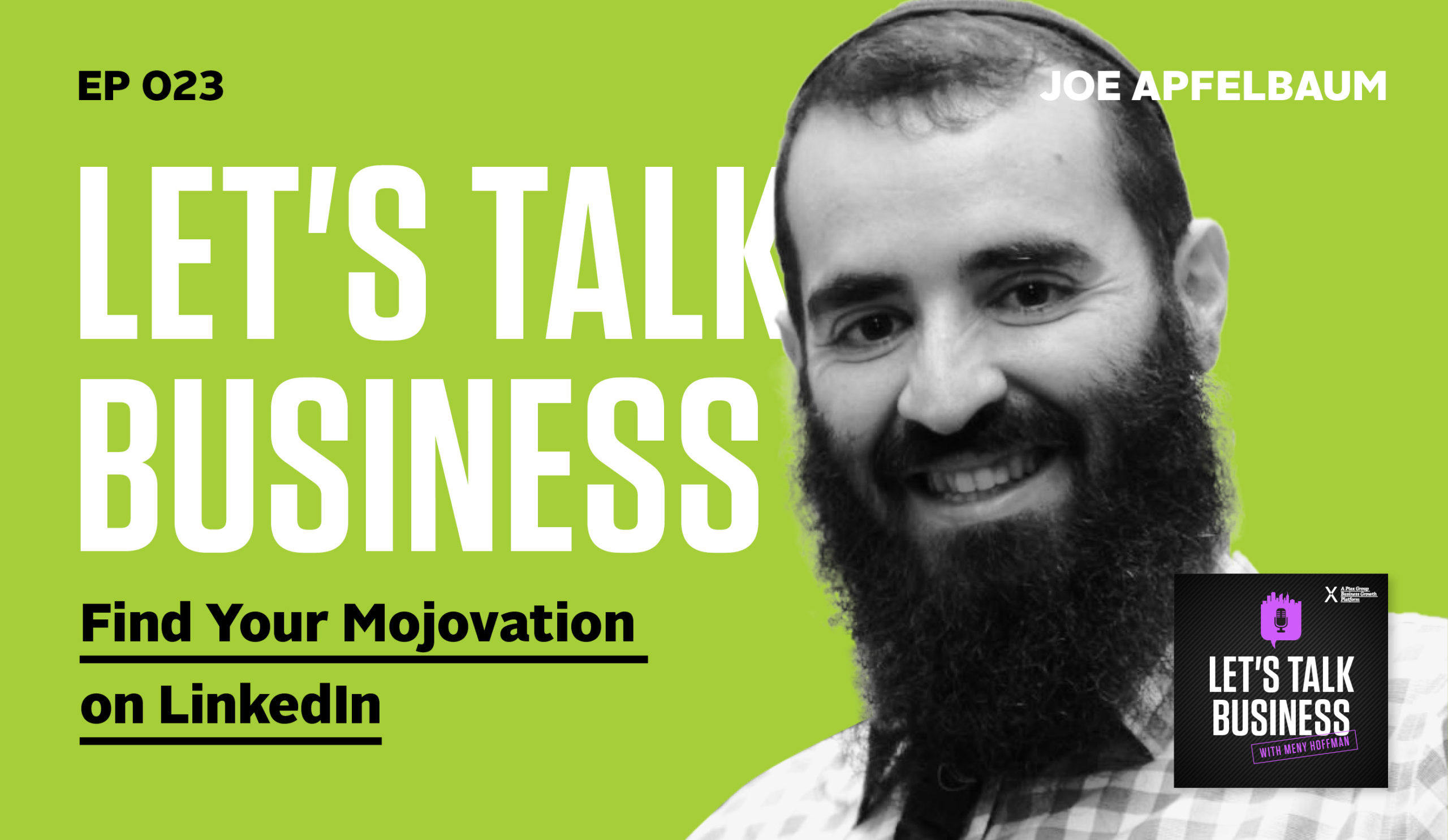How can you identify whether or not a product or business is investable? American entrepreneur and Shark Tank investor Kevin Harrington shares some key insights in this episode.
This week, I’m extremely honored to host the perfect guest to discuss this topic—my very dear friend, Kevin Harrington. Kevin is one of the original Sharks on the hit TV show Shark Tank, and is the creator of the infomercial and pioneer of the As Seen On TV brands that have become a global phenomenon.
In our interview, Kevin shares his experience of being on Shark Tank and what you need to learn from it to bring investors into your business. Kevin also explains how to know if you’re not yet ready to seek an investor and why some companies may be more successful without one at all. Finally, pay close attention to his closing remarks on how to recoup from COVID-19 and why Kevin’s new book, Mentor to Millions, is essential reading for every business owner.
This episode is a must for anyone serious about finding investors to get to the next level. Listen and enjoy!
Listen to the podcast here:
Download the audio file here.
What Investors Look For in Your Business—with Kevin Harrington
—
Kevin, what an honor to have you join the show.
It’s great to be here. It’s been a few years since we’ve hooked up. It’s always a pleasure and glad to be back.
It was in 2013, but it sounds like yesterday.
I didn’t realize it was that long ago. I would have guessed 3 or 4 years. It’s been years ago the last time I saw you.
[bctt tweet=”In today’s world, one of the highest costs of launching the product is marketing.” via=”no”]
Your name doesn’t need introduction. We’ll dive right into it. You’ve been one of the original Sharks on Shark Tank. Since then, you’ve been working with thousands of entrepreneurs and many different inventions on products. Some of them made it successfully and some of them obviously didn’t. I want to get into that because you speak to entrepreneurs every day. All they do is, “I want to be the next inventor. I want to develop the next product.” Throughout the years, what does it takes in order to be that inventor or even what it takes to be that entrepreneur to take that vision to life?
You mentioned the word inventor. I talk to inventors every single day. We get thousands of inquiries on a monthly basis from inventors. If you are a first-time inventor and you’re trying to go to the market, the chances that you’re going to be successful are slim because you’re competing against not just other inventors, but the millions of other products that are already out in the marketplace. There’s so much knowledge needed to protect your IP or your patents or trademarks or whatever protection you do have there. You got to protect it. You need marketing dollars. Ultimately, you need to have a whole strategy, a game plan, a business plan, etc.
In today’s world, one of the biggest costs of launching the product is the marketing of the product, the social media. For many years, I was the As Seen On TV guy. We launched Jack LaLanne’s Juicer and Billy Mays and Tony Littles’ Fitness and George Foreman and all these products. The first ones that I launched were much tougher because I didn’t know what I was doing in the early days. Once we got it going, we were going like clockwork. We had a system. We had the success principles. We also have what I call a Golden Rolodex. We’ve got the connections to manufacture, for retail distribution, for social media, etc. What I say in today’s world, if this is your first rodeo, you may want to have a mentor. You may want to have a couple of people from the outside that you could partner with maybe. Maybe you’re doing licensing or something, but be cautious trying everything all by yourself, first time, all alone, because the chances for success are slim.
I’ve heard a couple of interviews that you gave in the past and some other Sharks from Shark Tank. One of the things that’s a common theme that I hear is that a lot of times we don’t invest only in the product, we invest in the entrepreneur. Speak about that. Our readers would appreciate it. What does it take as a person, as a leader, as the entrepreneur, that you feel you need to connect to in order to see, “Is this the person I want to be in business with?”
People come on Shark Tank for a couple of reasons. Number one, they want money. Two, they want guidance, that mentorship situation. As an investor, I look at the product and at the business. I want to know that the fundamentals are there. There’s a good future, growth, profits, and am I going to get paid back? This is one of the things a lot of people miss when they go on Shark Tank to pitch. It’s all about themselves. It’s about their business, their idea, how well they’re doing, “Give me the money.” It’s more of a selfish thing. I like an entrepreneur that’s thinking about me and including me. This is getting back to what does the inventor or entrepreneur needs to be doing? They need to make sure that they have, at all times, the understanding that the investor needs to have a return on his investment.
I’ll get someone to call me, “I need $1 million. I’ll give you 5% interest on that money.” In other words, I write you a check for $1 million and someday, in the future, I may get $1.050 million back. Guess what? That’s a huge risk. Banks loan money, but they’re loaning when they’re secured situations. Sharks are loaning money against unsecured situation. They’re not looking for 5% interest. At the end of the day, I want to see somebody that’s got a tremendous background in the area that we’re talking about. I also want to know that they’re a self-starter because I don’t want to have to be managing. I’m not the CEO of any company and I’m involved with dozens. I want to advise, to consult, to mentor. I want somebody that is able to take up and run on a day-to-day basis and doesn’t need that constant supervision.
The baddest and worst deals that I did on Shark Tank were people that did not have the capability of being a self-starter. All I’m hearing from them all the time, “Should I do this?” They’re sending me copies of their ads and they’re this and they’re that. I’m like, “I got the wrong person here.” Be a self-starter. Especially if it’s a Shark-mentor relationship, maybe have it scheduled because the last thing busy investors want to have is constant contact and it’s like, “It’s never going to end.” Have it pre-schedule, preset, whether it’s a weekly meet and a call or Zoom or monthly or whatever it might be so that you can save the different things and you’re not driving these folks crazy. Ultimately, that is a scary situation and that’s why I look at the business, at the product, but I also want to make sure that we’ve got the right person that’s driving the ship.

From your experience, when would you say to an entrepreneur or business owner that you don’t need an investor? “You could do it yourself. You could find the money in a different way. Don’t part with your business at this point.”
If you have a lot of money, that’s great. Keep in mind, there’s money that you need for startup, but then there’s money that you need for rollout. Let’s take a product, for example. QVC, I had a product we took up to them and they said, “We’ll take 1,000-piece test.” We had to have that inventory. We shipped it over. They put it up and it hit and then they said, “We’ll take 5,000.” That sold out. 25,000, 50,000, the next order after 50,000 was 150,000. By the way, this is a product that costs $10 a piece to manufacture. When they’re ordering 150,000 pieces, that’s $1.5 million in the raw cost of inventory. Yes, you may have had enough for some of those opening orders, but as you’re going, you may need some more capital.
In the early days, it’s tough to get a valuation on your company that’s substantial, because you probably don’t have sales and you probably don’t have profits. You’re building a business and your value of the business is going to be small because of sales and profits. Whereas, in a year, you might be 10X that. If you’re looking to raise money on the front end with little sales and profits, you’re going to give away a lot bigger piece of your company. Some people, what they’ll do is raise a little bit of money upfront and at a low valuation, but they’re not giving away too much because it’s a little bit of money, then get the traction going and build the business 10X in sales and profits. Now you’re going to give away a much smaller piece of the company. It’s important not to give away the whole company on the front end.
When you started out, most sales for brands were done through brick and mortar. Obviously, with time, then it was As Seen on TV and now with social media. How do you see the buying patterns of shoppers and consumers are changing? How do they gain the trust factor and trusting brands? What could brand owners and product developers do in order to gain more momentum than others?
In the early days when I launched the As Seen On TV model, we would put a phone number at the end of the show, “Call this number.” We give them an address to send a check or money order. All of our sales came virtually in one of those two ways, the phone orders or credit cards. If you send a check, then it was cash or check. This was back in the early ‘80s. As we got into the mid-‘90s, then it was phone number, check or money order and, “Go to this website.” We would get 10% checks, 10% web orders and 80% would still call the number. As we pushed that forward into the 2000s and beyond, we still put phone numbers in. There’s no check or money order anymore. We’re driving them to a website big time. We’ve got campaigns.
Even with a phone number and a website, 80% of the people go right to the website. They don’t want to waste the time on the phone talking to somebody. They also probably know that the person they’re talking to might try to sell them something else also. It’s easier to go right in and order it on the web. Our business model has shifted. In fact, it’s shifted so much that we don’t even go on TV near as much as we used to. We start right out on the internet, on Facebook, Instagram, YouTube, Pinterest, Google, whatever it might be, because it’s easier to test. It’s lower cost to test. We don’t have to spend the huge money that we’ve had to spend on the TV side. Things have been figured out now.
By the way, in the early days, after you got about $5 million or $6 million in media, then you could also get the product at retail stores. There’s been a shift even from here with COVID. Stores were closed. People are not going out as much. Obviously, with Amazon, Walmart is doing a big push direct to Walmart.com. They’re going head to head with Amazon. There’s been a huge shift over the years from people ordering direct off TV, to sending in their checks, to going to the internet, to then maybe buying it in the stores. Retail has been hurt. Most of our sales are occurring online. This makes it easy. Look at what Amazon has done. It’s created an amazing competition for all the rest of retail, for sure.
[bctt tweet=”Keep in mind that there’s money that you need for a startup, but then there’s money that you need for rollout. ” via=”no”]
How do you advise your brands that you’re involved with? There’s the conversation out there, “If they come to my website, we own the customer and we could deliver that experience. If we send them to Amazon or Walmart, we don’t own any of those.” Are you still going after all the platforms in order to diversify?
Yeah. In fact, that’s a good point because when you sell through Amazon and Walmart.com, you don’t get the customer. The challenge there is many of the products that we sell are ingestibles, skin, or whatever. They have continuity, auto-ship. When you can auto-ship the people, people sign up for it. Proactiv is a great example, the skincare. If they were only selling one, it’s a $40 sale. People were signing up and some people are on for years, but the average turn is getting more than eight turns. Instead of a $40 sale, it was a $300 sale. If you’re dealing on Amazon, it’s one turn. Controlling your customer is a way better business model if you can. To control it, you’ve had to acquire it also. You’ve got the cost to acquire that customer on your own. Whereas with Amazon, they’ve got customers and they’re bringing you the customer. They’re doing it their way. It’s their way or the highway.
I always say it’s depending on how big of a market share you want to get. If it’s a smaller market share, you could better control it. If you want a larger market share, you need to go where the clients are, where the customers are. I know that you have authored a new book. Let’s hear about it.
It’s called Mentor to Millions. I’ll give you an example. My first mentor was a man named Charlie. He was my father, when I was eleven years old. He said, “Kevin, you got to own your own business.” I was a teenager when I started my first business. I started one in college. As I grew up in this As Seen On TV space, one day, I was sitting with 40,000 orders, but I didn’t have the inventory and I didn’t have the capital to go buy the inventory. I reached out to my friends, people, and relatives. A mentor in the finance area, I ended up getting the referral of a gentleman that was the former bank president of a big bank in Philadelphia where I lived and he was retired. I reached out to him and I said, “I’ve gone to five banks and got turned down for financing.”
After he heard about my business, he looked at me and he said, “You have such an exciting business. Let me tell you what I’m going to do. I used to run one of the biggest banks in Philadelphia. I’m going to get you your money.” $3 million is what we wanted. “I will get you the $3 million. I’m not going to charge you a dime. We’re going to sit down afterward and you’re going to say, ‘How did you do that?’” He told me that he could get it from one of the banks that had turned me down. I said, “Let’s do it.” He said, “All I ask is when we’re done, let’s sit down and see if there are any opportunities between us. That deal, you got the money, we pay it back to the bank, but I’m out.” We shook hands and we did the deal and 90 days later, I had $3 million in my bank account. We 10X the company from there.
The point of this is that without that mentor, it would have never happened. That’s why I said entrepreneurs need mentors and that’s why I wrote the book Mentor to Millions. The millions isn’t dollars, it’s about the power of getting a mentor that can bring you exponential success like this gentleman did to me. I got a 10X on the value of bringing all this money to the table. I put a program together. The book is $17.99. It’s not crazy. You can go to KevinMentor.com and through there, you’re going to get it on Amazon. If you buy it through there, we will give you a 30-day mentoring program absolutely free for the $18. It’s an unbelievable deal because I wanted to make sure that I can offer the mentoring to as many people as possible.
We’re going to be doing live sessions of mentoring, virtual sessions. We got a lot of recordings done. I have a co-author named Mark Timm. The two of us had put a powerful program together here. It’s great for you to share this with your audience. I appreciate it. The book is called Mentor to Millions. You can pick it up. You could get it on Amazon. It’s powerful. We talked about how to get a mentor. One other thing, not just how to get a mentor, but how to be the mentors’ best student. That’s important because I’ve had mentees that after a couple of sessions, I’m like, “I’m out. You’re not following up. You’re not doing the things that I recommended. You don’t have time. If you don’t have time, I don’t have time.” It’s important to be a good mentee also.

It’s important because you could save years of plateau or potential growth and money with a mentor. That could accelerate the process so much. I appreciate that. I want to ask you one final question. This was a hard year for a lot of people personally, health, and financially. There are many business owners and entrepreneurs out there struggling. You’ve seen it all, throughout the years, people fail, pick themselves up, grow from there. What is that one message you would leave our audience, those people that are struggling and still grinding every single day?
We’ve had a tough time. We may have a little bit of activity in the fall. For the most part, the worst is over. Things are settling back to normal. This is the one thing that is vital. I’m a customer acquisition specialist. Every infomercial I did, what were we doing? Selling product, getting customers. Never take your eyeballs off customer acquisition. How do you get them put into some continuity or subscription revenue? When COVID first hit, there were tens of millions of unemployed people. They were at home. The retail stores were closed. People weren’t working. They couldn’t go out. What happened is, your television viewership and your internet usage was skyrocketing while advertising revenue was plummeting. You had this big window of opportunity for customer acquisition and that’s been my focus.
Go get some great customers and try to figure out continuity in the process. People were putting their heads in the sand during COVID and saying, “I got to wait and see what happens.” The smart people were running quick to go get more customers and lock them in for a long-term shipping scenario. That’s the key. The last part of that is get a dream team that you can work with to help you through some of these times. I went through the Gulf War crisis in 1990, which had some similarities to what’s happening. I’ve already been through a crisis. Mentors and dream team members can help you survive through this. A positive attitude is the key because this will cycle out and business is going to be picking back up to closer to normal in the near term.
Kevin, thank you so much for joining us. I know your time is valuable. That is why in the name of our readers, we’ll forever be grateful for sharing some of your time with us. Thank you so much.
Links Mentioned:
- As Seen On TV
- Mentor to Millions
- Walmart.com
- KevinMentor.com
- https://KevinHarrington.tv/
- https://www.LinkedIn.com/in/thekevinharrington/
About Kevin Harrington

Kevin Harrington and our award-winning independent media production company are leaders in direct and brand response television (DRTV/BRTV). Kevin is the pioneer of the As Seen On TV empire and an original Shark from the Emmy award winning show, Shark Tank. He’s the Co-Executive Producer and mastermind behind AsSeenOnTV.pro, DRTV/BRTV campaigns. Kevin’s 30+ year track record of success amounting to over 5 billion dollars in global sales, coupled with the expertise of our production team, catapults products to the next level.
“The infomercial has become a mega-billion-dollar business. It has become a social institution and it has unexpectedly become an intriguing route that makes it possible for anyone with a little drive and determination to become wealthy beyond his or her dreams…” – Kevin Harrington









